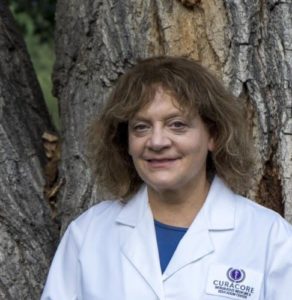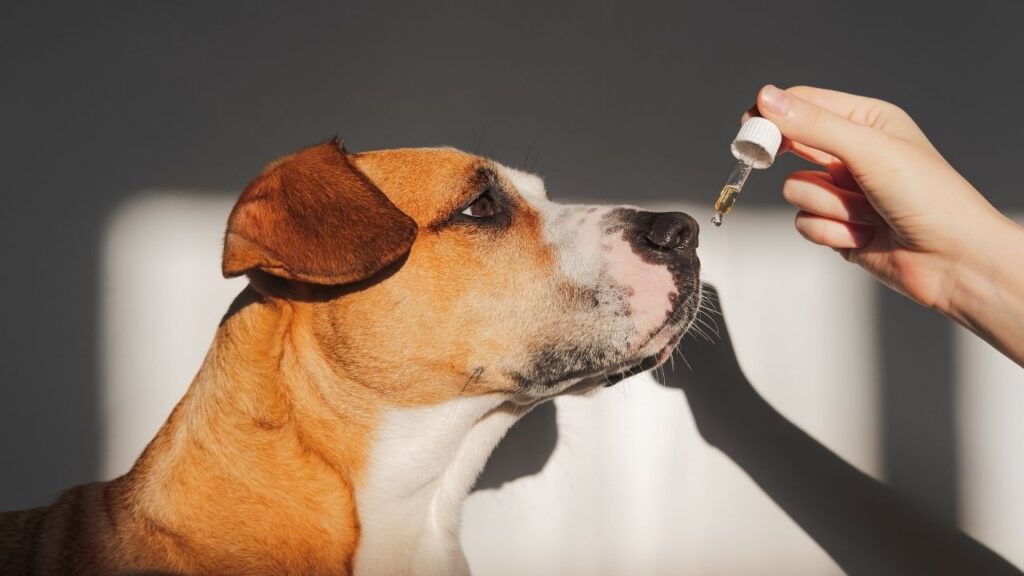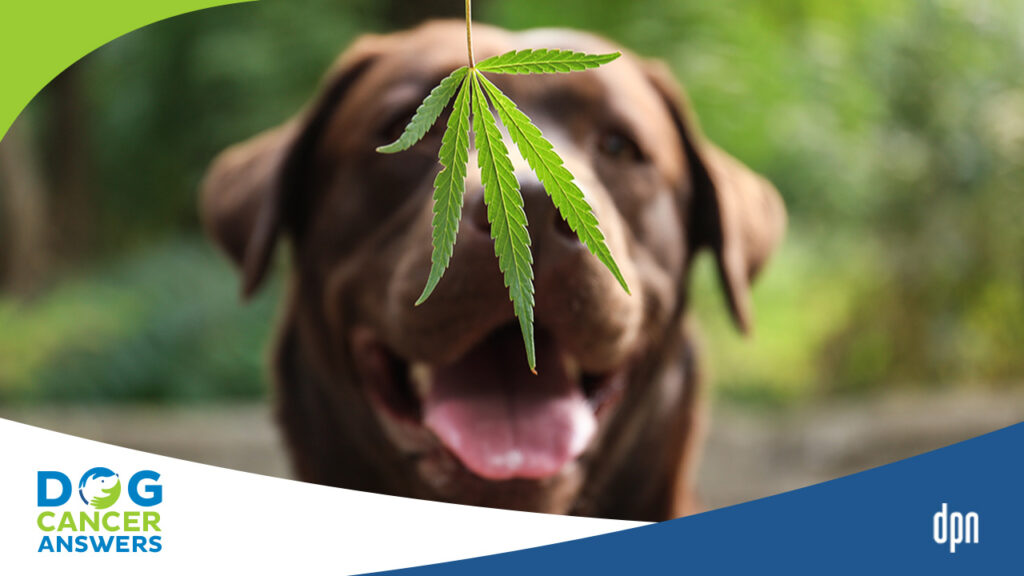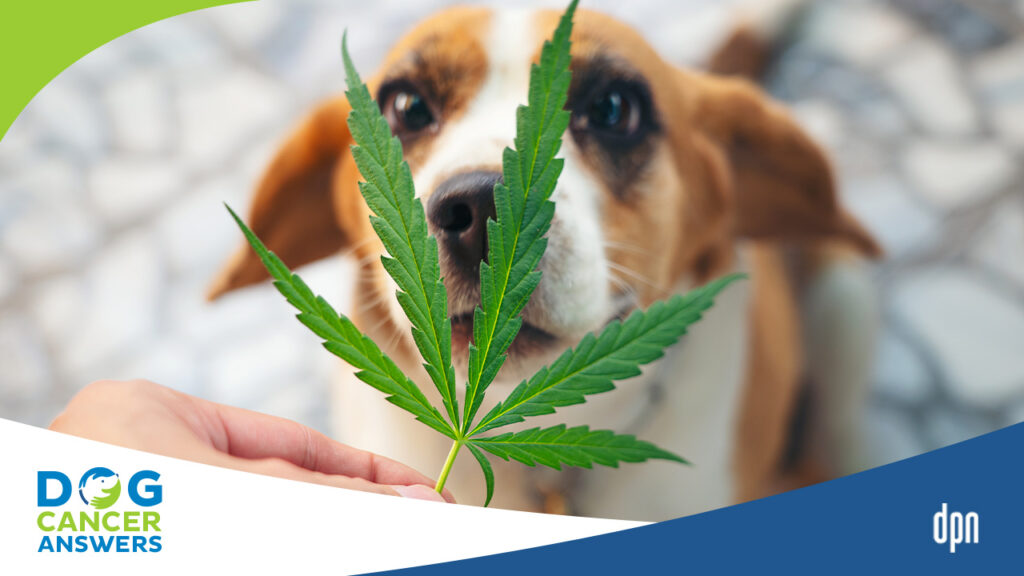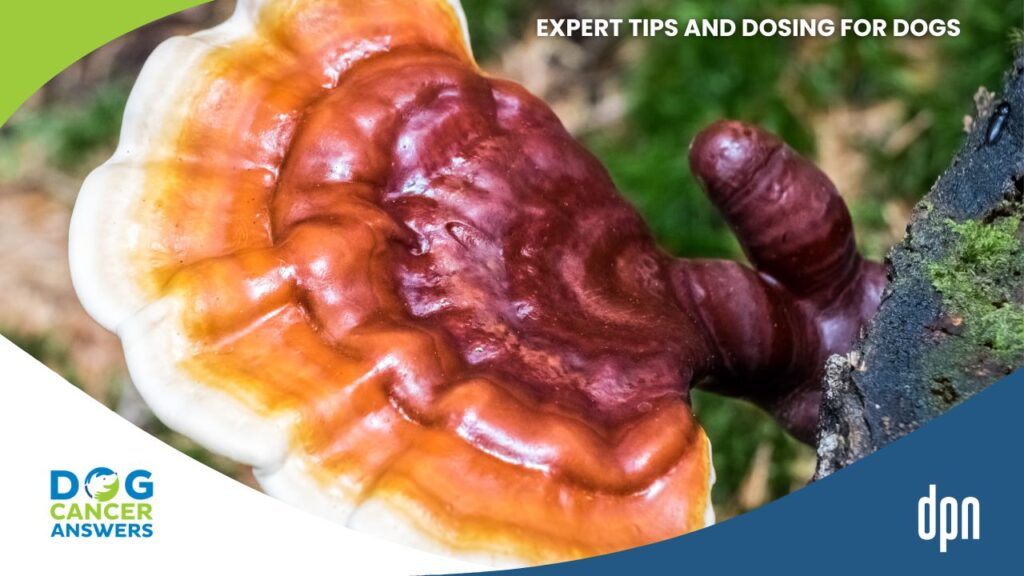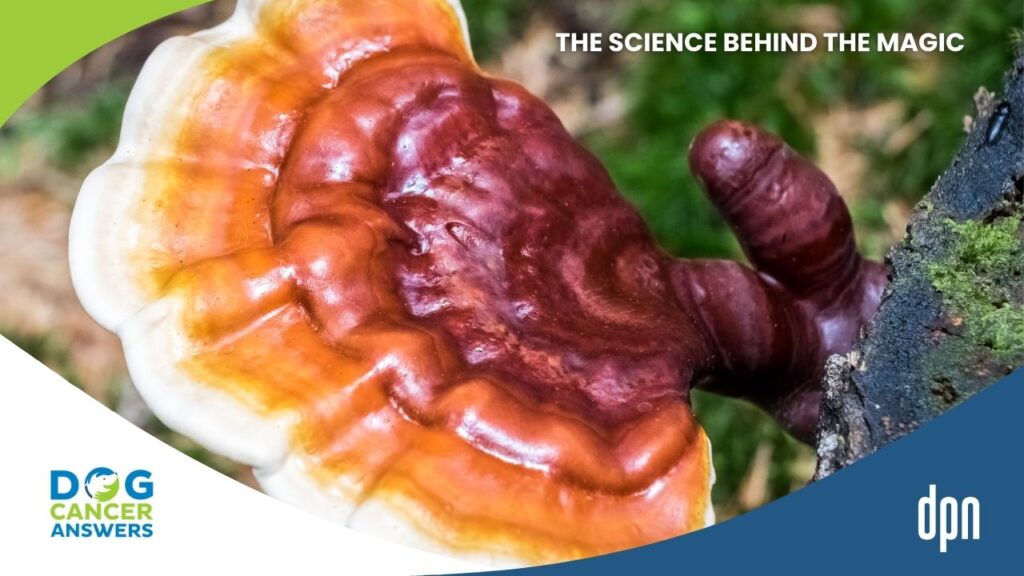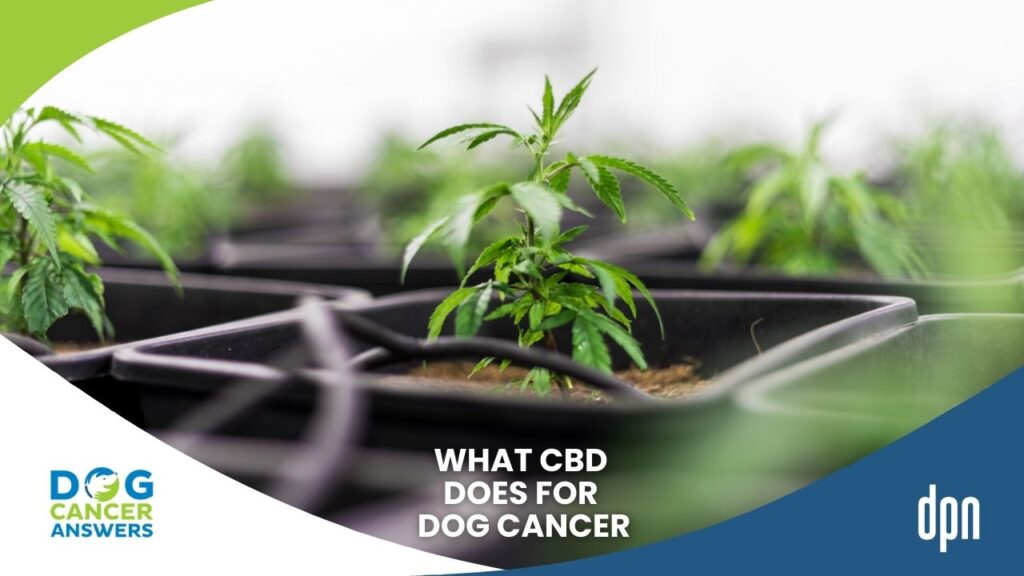EPISODE 219 | RELEASED June 5, 2023
CBD and Cannabis for Dogs: Then, Now, and Looking Forward Part 1 | Dr. Narda Robinson
Cannabis dog research has come a long way, and every day we learn more about how this plant can help our dogs.
SHOW NOTES
Dr. Narda Robinson has been involved with cannabis and CBD in dogs since Colorado State University first started looking into it. In this episode she talks about her first time going to a grower operation, why cannabinoids have an effect in the body, and the differences in how THC and CBD work.
She also discusses some of the nuances of dosing, and the different situations where a cannabis product can be useful (and it’s not just cancer!).
This is Part 1 of our long interview with Dr. Narda.
Links Mentioned in Today’s Show:
Colorado State University Veterinary Teaching Hospital: https://vetmedbiosci.colostate.edu/vth/
Raphael Mechoulam’s cannabinoid research: https://cannabinoids.huji.ac.il/people/raphael-mechoulam
[00:00:00] >> Dr. Narda Robinson: Like in Denver, you have people that specialize in cannabinoid medicine, and so it’s a different playing field. You have dispensaries that have, you know, a shop full of different strains or cultivars, and if you have somebody that is very familiar with which chemical makeup each strain has, and you’re a physician that’s kind of prescribing that, then you could say, okay, it’s like build your own medicine.
[00:00:30] >> Announcer: Welcome to Dog Cancer Answers, where we help you help your dog with cancer.
[00:00:36] >> Molly Jacobson: Hello, friend. I’m Molly Jacobson. Today on Dog Cancer Answers, we’re starting a deep dive into cannabis and CBD for dogs with Dr. Narda Robinson. Dr. Narda is both a veterinarian and an osteopath, and she’s been interested in the health benefits of cannabis for dogs since it first started being studied at Colorado State University.
This is a wide ranging conversation, and it’s a little long, so we’ve split it into two parts. Today we’ll cover some of the basics of cannabis, THC, and CBD, as well as how the work at CSU got started. And then next week we’ll look more closely at some specific ways CBD can benefit cancer patients, as well as how to choose a product for your dog.
Dr. Narda Robinson, thank you so much for joining us again today.
[00:01:26] >> Dr. Narda Robinson: Happy to be here. Thanks for inviting me again.
[00:01:29] >> Molly Jacobson: Absolutely. And we’re gonna talk about a topic that is just all abuzz and we know both, I think too much and too little about CBD.
[00:01:37] >> Dr. Narda Robinson: Yeah. Right, right. Although fortunately we’re knowing so much more than we used to. So, yeah. So wherever you wanna start, and I have, I could start with a little story.
[00:01:49] >> Molly Jacobson: Stories are good. Let’s start with a story.
[00:01:51] >> Dr. Narda Robinson: Okay, good. Yeah. Let’s start with a story. So, you know, Colorado was one of the first states to approve the sale of cannabis, especially recreational, probably medicinal too. So at, in around 2015 when all these things were happening, and I was still teaching at CSU, um, it was probably my 19th year there.
And so there was a lot of interest in researching the application – and it would be CBD, not THC – for dogs, and we were having potential donors contact the president of the university saying they wanted to fund research and could they get started. And there was, you know, I commend CSU for being brave and proactive because with the vagueness of the laws around cannabis, that still persist, but especially then when things were just opening up the slightest bit, they really wanted to take a step forward and start researching.
So they determined, okay, who would be, maybe a good company to fund some studies, and there was this one company in Denver. And then the president of the university had been, like probably 20 years earlier, my pathology instructor in vet school. And so he knew me and and I knew him. And they were trying to figure out which faculty member would be good in the university, like who would be good to start researching cannabis?
Um, and, you know, here I was practicing integrative medicines from a scientific perspective. But I’d been there, again, like a really long time. And so they contacted me and, I don’t know, I, I would be dating myself, but back in the day there was this ad for Life cereal and the, the kids would, they got, had a little brother and, and they’re like-
[00:03:48] >> Molly Jacobson: Mikey?
[00:03:48] >> Dr. Narda Robinson: Yeah. And, and it’s supposed to be good for you. And it’s like, I don’t know, let’s get Mikey, he’ll try it, Mikey will try it. And then he really liked it. And so I felt like Mikey, because they had wanted, you know, I mean they were considering like, who should do it, and of course I jumped at the chance, and then there’s more. But you know, it was a, it was a tough sell for other faculty, especially any that were getting federal funding, because they could lose their funding should they have anything to do with cannabis.
There were also people that were donors to the university that were not into this and said, if your department takes any of this money, you know, any money and puts it towards research, not even of theirs, but if we see that, we’re not gonna fund anymore. So.
[00:04:28] >> Molly Jacobson: Wow.
[00:04:29] >> Dr. Narda Robinson: Everybody else was scared and, and not moving forward. So I didn’t care, I didn’t have any federal funding, and I wanted to do this research and everything. So, it gets even stranger because it was strange enough to be able to go to a store and buy marijuana.
[00:04:44] >> Molly Jacobson: Yeah.
[00:04:45] >> Dr. Narda Robinson: Not that I did necessarily, but, but it was the first, it was like, this is crazy.
[00:04:50] >> Molly Jacobson: It’s crazy.
[00:04:51] >> Dr. Narda Robinson: It’s legal.
[00:04:52] >> Molly Jacobson: I don’t know what that’s like in Hawaii. I mean.
[00:04:54] >> Dr. Narda Robinson: Yeah.
[00:04:55] >> Molly Jacobson: Yeah.
[00:04:56] >> Dr. Narda Robinson: Well, you know, it’s, it varies state to state, I mean, even now.
[00:04:59] >> Molly Jacobson: Right.
[00:04:59] >> Dr. Narda Robinson: Yeah. Veterinarians can lose their license in certain states even if they bring up the topic, not of marijuana and THC, but CBD. So we went to this one prospective donor’s grow operation. I went with one of the highest people in the financial realm at CSU to this location, which was this old warehouse that was a grow operation, and it was just so super strange ’cause you walk in and you’re hit by this odor that’s like sort of cat urine mixed with skunk and I didn’t like it at first at all.
And then just these young people, typically young men, that were very expert at growing this stuff, apparently, and they showed us how it went from seedlings all the way up to the, the full mature plants and how they would tend to them. And you know, it was just, it was just like so mind blowing. So we got to the end and where the plants were being hung and dried and then cut.
So I learned a lot about that. But an interesting thing – because all this kind of came through, even now today there are things to think about in terms of where does this product come from? Who’s growing it? Who’s managing quality control? And what are the incentives to promote good practices or less good practices?
So when we were at the end of the tour and the, there were big rooms with mature plants, this one tour guide that was at that level of things came out with a wand, like it was attached to like a big black 50 gallon drum that was pesticides. And he starts spraying the leaves and coming at it from like underneath and saying how you had to get where the bugs were or where, you know, things were hiding. And I thought, wow, what is in that 50 gallon drum?
[00:06:47] >> Molly Jacobson: Yeah.
[00:06:48] >> Dr. Narda Robinson: You know, because these are super valuable plants.
[00:06:50] >> Molly Jacobson: Right.
[00:06:51] >> Dr. Narda Robinson: And you don’t want bugs to get there. You don’t want mold. So that was really eye-opening because I thought, wow, that stuff’s staying on there, then it gets dried. And then for the marijuana plants that did have THC that were growing in there, like if you smoke that, that is a direct input into your lungs across that membrane barrier into your bloodstream.
So I thought, wow, you know, this is really why it’s so important to have organic if possible, just because who knows what is in that thing that just got sprayed on there. Anyway, so things like that. But then, when we were done, and we’d been there probably about an hour, and I no longer hated the smell, and we left.
[00:07:38] >> Molly Jacobson: The plant had spoken to you.
[00:07:40] >> Dr. Narda Robinson: Yeah. It had spoken in many different languages. And um, and so we’re walking out, it’s like, wait, I don’t wanna leave, you know?
[00:07:48] >> Molly Jacobson: Oh, wow.
[00:07:49] >> Dr. Narda Robinson: Because it’s just like the aromaticity of the diffused oils and terpenes and everything that was in that place. And it’s just so mind bending, mind-changing, mind opening. And so it, it was just a great start to how CSU then, you know, had people from different departments and is now still very on the leading edge of cannabis research, especially cannabidiol, um, so CBD. So anyway, that was my first foray and, and I just think it is such an important advance that we have an opportunity to use, you know, not all of us, but to bring to veterinary medicine.
And so different topics I was thinking about for today is just how it upgrades the practice of botanical medicine by setting different standards, so new standards, but there’s all kinds of complexity there. It upends our conditioning that, you know, so much of doing medicine is drugs or surgery. So pharmaceuticals or surgery.
And just like how does something like that fit in with a full integrative practice, with acupuncture, with laser therapy, with massage? And what different sort of mechanisms of action does it have to add? So there’s, there’s all kinds of different avenues, I mean that we can discuss, but it’s just a tremendous field and I’m so glad that we are in an era where we can restore some type of cannabis derivative to medicine ’cause it used to, historically, it has been part and parcel of the pharmacopeia. I mean, even in the early 1900s.
[00:09:23] >> Molly Jacobson: Right. It used to be medicine. And then it became illegal and we couldn’t even think about it. We couldn’t research it. And that’s still tough, as you pointed out. So, I just wanna say like, I think we should have a nationwide, I think it should come off Schedule One so we can-
[00:09:39] >> Dr. Narda Robinson: Oh yeah.
[00:09:40] >> Molly Jacobson: -really investigate it, right? And use it.
[00:09:41] >> Dr. Narda Robinson: Right. Right.
[00:09:43] >> Molly Jacobson: We’re gonna take a brief break here and hear from our sponsors, and then I want to ask you about the specific actions of CBD and THC.
And we’re back with Dr. Narda Robinson. So let’s talk about the actions that you see CBD and/or THC, if, I’m sure there’s a difference there. Let’s talk about what they add to medicine from your point of view. And then if there’s duplications, if there’s standard of care treatments that are fine, and we don’t need CBD for those, like let’s talk a little bit about what it does bring and what it’s duplicating.
[00:10:20] >> Dr. Narda Robinson: Yeah. You know, it doesn’t exactly duplicate anything, but there are certain mechanisms like neuroprotection, anti-inflammation, pain control things that it offers. So in case I forget where I started, I’m just putting them out there as a breadcrumb to come back to it. But first of all, the terminology that seems to be a good working way to go forward is that it’s cannabis. And so, so many people, as we started into this whole field, it was just like marijuana, marijuana, marijuana. And that’s even not a good term.
So you have just a cannabis plant, and yes, there are different strains to it, and they originated in, in sort of Eurasia way back when, so it’s, it’s even before recent times. It, it’s been a long term medicinal.
[00:11:06] >> Molly Jacobson: Okay.
[00:11:07] >> Dr. Narda Robinson: But then it was brought over here. And so as it’s been cultivated, there are strains that have different elevations of certain chemicals. So what we know of as, now, as marijuana according to the FDA, has more than 0.3% of THC on a dry matter basis. And so we wanna be, there’s a certain very clear cutoff as far as when a cannabis plant has too much THC in it to be called hemp or a CBD rich kind product, and you’re getting into marijuana. And this is important for people that have crops.
So if like in Colorado, the Department of Agriculture comes by, like a whole field of cannabis might have different levels of THC during the growing season. So it sort of matters, when did they come by and test? So that’s a situation. And, again, when I first started doing the research, we sent certain samples of still currently available, but back in, so that was back in 2015, back at that time, did certain commercial preparations that were just coming available of hemp-derived CBD, like dog biscuits and capsules, what was actually in there, and some of the results I was getting back was that there was too much THC in it. And so I think all that can happen and then get, that gets into Certificates of Analysis and quality control. That’s another huge, huge topic. But anyway, the THC part is just one of the active constituents in cannabis. So all plants have probably hundreds of different chemicals that are active in different ways. Oftentimes you have chemicals that do one thing, you know, let’s say increase something, but then you have balancing chemicals that counteract it.
So many proponents of cannabis approach, recommend, having a whole plant derivative rather than taking out the CBD or or other things because there’s the richness of chemistry of a full plant extract. And I can certainly see that, because things like THC and cannabidiol are called cannabinoid, so they have a certain structure and related to fatty acid derivatives and things like that.
But then you have terpenes or terpenoids, which are more the essential oils component there. And there are chemicals in the cannabis plant that are also found in like lavender, like linalool, or mangoes, like myrcene, or black pepper, like beta-caryophyllene, or you know, citrus fruits, like limonene.
And so there’s that, and that’s part of what gives a cannabis, you know, like you have buds, or if you have just grounded whatever, you have the cannabis plant, when you smell that, that’s more the terpenes, because CBD and THC are odorless themselves.
[00:13:59] >> Molly Jacobson: Ah.
[00:14:00] >> Dr. Narda Robinson: And then you have other things like flavonoids that provide some of the color. And some other things too, you might have pollutants because of the pesticides or how an extract was done, then maybe there’s butane in it. So that’s part of that quality control thing. But the delta-9-tetrahydrocannabinol is THC and that is the more hallucinogenic, the thing that gets you high, more the thing that can become a toxicosis for dogs pretty quickly, small animals and and all that.
So that’s what veterinarians sometimes cringe about because they might have seen an animal that got into a stash and that’s pretty heartbreaking. But still, I mean, I haven’t heard of any cases now to date, but it’s like how many animals have died of a marijuana overdose? And it’s hard to say, not a huge amount. I mean, not that it’s something you can take lightly ’cause they can get so comatose and have really, really bad reactions. But if we put it in the context of pharmaceuticals, there are certainly more dangerous pharmaceuticals that are legal and people regularly prescribe.
[00:15:09] >> Molly Jacobson: Okay. Well that’s interesting, ’cause I know that is something that people really wonder about is like, some people, you know, like wanna make a black and white thing, or they hear THC is bad, so they assume any amount of THC is gonna kill their dog. And it’s not necessarily, you don’t think that’s true. It’s more like it could make the dog really sick, possibly very sick, but it’s not as dangerous as other things. Like it’s not like eating rat poison or-
[00:15:33] >> Dr. Narda Robinson: Oh no. And there are even, this is the thing with setting a new standard for herbs. There’s like herbal strychnine.
[00:15:40] >> Molly Jacobson: Right.
[00:15:40] >> Dr. Narda Robinson: It’s called Nux Vomica, Strychnos-
[00:15:42] >> Molly Jacobson: Uh huh.
[00:15:43] >> Dr. Narda Robinson: -that is part of Chinese medicine-
[00:15:45] >> Molly Jacobson: Right.
[00:15:45] >> Dr. Narda Robinson: -that people that are certified in Chinese medicine are recommending for animals with disc disease. They don’t realize, or maybe they do, but you have a Chinese name for it and you maybe never thought about it, but it’s like if an animal had too many of those, they’re gonna get high levels of strychnine. Then there’s aconite, which is a cardiotoxic and a neurotoxin. So it gets back to how much herbal medicine training should be included in veterinary medical school.
[00:16:15] >> Molly Jacobson: Uh huh.
[00:16:15] >> Dr. Narda Robinson: Because, yeah, ’cause vets are helpless otherwise to take a critical perspective and see the good and – the good and bad of herbs compared with the good and bad of pharmaceuticals. And people want options. And so, yeah, I think that where we go with cannabinoid medicine would be that a little bit of THC is not bad. It has benefits for pain control that are different than CBD. But you know it, any kind of pharmacologically active agent is going to be different in terms of dose. And so it gets back to dose.
And that’s why it’s important that we have studies, research, that is looking at pharmacokinetics, pharmacodynamics. So just the how the drugs are distributed through the body, what the effects are, how might they be additive with other pharmaceuticals, pain controls, drugs, anti-inflammatories, et cetera. How might they have interactions that could negate the effects of certain pharmaceuticals.
[00:17:16] >> Molly Jacobson: Excellent. What do we know about THC and what do we know about CBD in terms of what they do for dogs in the body?
[00:17:24] >> Dr. Narda Robinson: THC, we think of as the high that there is, but there’s also the pain control, which is what brought it to its popularity with like cancer and all this, so in terms of medical marijuana.
[00:17:36] >> Molly Jacobson: Right.
[00:17:37] >> Dr. Narda Robinson: And the effects on the nervous system and, and other systems are in ways quite different than cannabidiol. So for any kind of cannabis plant, you usually have, the main amounts of chemicals are either gonna be THC or CBD, which is cannabidiol, in different amounts. So hemp plants have much higher CBD and low to very negligible THC. Marijuana is defined in the US is higher THC and lower CBD.
[00:18:06] >> Molly Jacobson: Okay.
[00:18:06] >> Dr. Narda Robinson: And so through the decades of research that were done on marijuana by Raphael Mechoulam, so he’s, I think he’s passed now, but he, he was the pioneer in marijuana research looking for the substrate within the body that made THC have its effects. And in so doing, they found that we actually have already in us substances that act on receptors that are similar or the same as what THC will act on. Different chemicals, different chemical structures from a plant versus what our body makes.
[00:18:48] >> Molly Jacobson: Our body makes these things naturally, or things like them, naturally.
[00:18:52] >> Dr. Narda Robinson: Right. And that’s – and so he called it the endocannabinoid system because he was looking for an endogenous, so an internal, substrate or receptors like we have for serotonin, benzodiazepines or, or you know, just different chemicals, opioids.
[00:19:07] >> Molly Jacobson: Right.
[00:19:08] >> Dr. Narda Robinson: Uh, dopamine.
[00:19:08] >> Molly Jacobson: Dopamine.
[00:19:09] >> Dr. Narda Robinson: Yeah.
[00:19:10] >> Molly Jacobson: All of these things. Yeah.
[00:19:11] >> Dr. Narda Robinson: All of these things. And so, turns out we do have receptors, and that’s how THC makes its effects because it binds to these receptors and, oh, so there’s a whole science of the endocannabinoid system. And so the receptors for THC are more highly concentrated in the central nervous system. So the brain and spinal cord.
[00:19:33] >> Molly Jacobson: Okay.
[00:19:34] >> Dr. Narda Robinson: So those are your CB1 receptors. There’s also something called CB2 receptors that are more in the periphery and especially the immune system. So when we see cannabis being studied for inflammation, I mean, part of that is because it’s regulating how our immune system is dealing with provocation from the outside or the inside.
And another aspect of the endocannabinoid system is that when the body is very stressed or painful, some kind of shock has come to the system, the endocannabinoid system, it responds and it dampens that shock. So it’s happening in us all the time. It’s amazing to me that still nobody is learning these pathways in school, even though it’s such a part and parcel of neurophysiology.
You know, like we learn about the autonomic nervous system, the sympathetics and parasympathetics, so fight or flight, or rest and restore. But what’s also going on all the time is this endocannabinoid system. And so, and it explains things like maybe it’s supposed that it could be responsible for like fibromyalgia and migraines and, probably, irritable bowel syndrome, a variety of conditions also probably in animals when you don’t have enough of these endogenous cannabinoid-like substances, but you know, you have a deficiency.
[00:20:58] >> Molly Jacobson: When you don’t make enough on your own, you suffer.
[00:21:01] >> Dr. Narda Robinson: Yeah, you suffer. Or it degrades too fast. So there’s you know, there’s ways you can manipulate the pharmacology there, even endogenously or even within the body, but also through taking plants or something like that. So that’s the endocannabinoid system with receptors and things that are more standard. When we get to cannabidiol, that is not working so clearly through the endocannabinoid system.
[00:21:28] >> Molly Jacobson: Okay.
[00:21:29] >> Dr. Narda Robinson: Yeah. And so it’s very different. It works with a lot of different neurotransmitters, like serotonin and all these different little receptor names, orphan receptors, you know, G-protein type receptors, so a lot of different ones, and has an indirect effect on how THC works on the body. So they call it a negative allosteric inhibitor. So that what it does, essentially, like I said before, it helps to balance out the effects of THC so that it helps regulate the response when somebody does ingest THC.
So it’s actually a nice way for, you know, there to be less of a outrageous kind of effect. Because back in the day, I mean, you didn’t have plants that produced so much THC. I mean, it’s just really been cultivated to a crazy high level, you know, so that can get people into trouble, but it can also be good, I guess, for people that really need that kind of pain control ’cause you get tolerant to the THC if you have it all the time. But that’s not what we’re dealing with in veterinary medicine.
So with veterinary preparations, we’re looking at more hemp derived products, so that’s high CBD, low or negligible THC. And you might have a manufacturer that has extracted and is only providing a CBD product or mainly CBD, but then you have others that are more bringing all the richness of the plant in there.
And why that’s important is that the terpenes, so the essential oils, I mean, they’re gonna have different effects. If you have like linalool, if you think of, like I mentioned that’s also in lavender. What does lavender do: that’s relaxing, it’s calming and everything. So if we had a seizure patient and we’re dealing with a full spectrum kind of hemp product, I think it would be better to have a strain that had more of those comforting linalool or myrcene.
Myrcene is from mangoes, but also hops and and other products, and people talk about that as being more of a physical, like just restful, like you wanna just lay on the couch. And for a seizure patient, those kinds of parts of the plants would be good for that, versus limonene, which is from citrus, is more activating to the brain.
So, you know, I, I think when you see what kind of level of sophistication is happening in human cannabinoid medicine, where there’s much more tailoring of strains and just all the particulars depending on what your goal is. Is it treating autism, multiple sclerosis, pain, or stiffness, spasticity, cancer pain, depression, PTSD? So you could tailor things better.
In veterinary medicine, we are much more in the infancy. And it’s like we have big players in the field that have done some research and, I don’t know, it’s attractive to go to the companies that have produced research because their product is different than somebody else’s product is different than somebody else’s product. So it’s not like we are creating a medicine based on get some of this strain, get some of that strain.
[00:24:32] >> Molly Jacobson: Say a little bit more about that. You’re saying that veterinarians have to sort of, because the medicine is based on human medicine, it might be a little bit different for dogs, or is it that you just don’t have the resources financially to start creating products that are specific to dogs?
[00:24:49] >> Dr. Narda Robinson: Yeah, well, so there are lots of companies that produce products for dogs.
[00:24:54] >> Molly Jacobson: Yes.
[00:24:54] >> Dr. Narda Robinson: Some have really come out and made linkages with universities and so made lots of strides and are publishing a lot.
[00:25:03] >> Molly Jacobson: Okay.
[00:25:03] >> Dr. Narda Robinson: It’s attractive to go to them because if you have somebody else that says, well, I have a product too, and mine’s really good and it does this, that, and the other and so trust me and, and all that. Versus when you have, like in Denver, you have people that specialize in cannabinoid medicine, and so it’s a different playing field. You have dispensaries that have, you know, a shop full of different strains or cultivars.
And if you have somebody that is very familiar with which chemical makeup each strain has, and you’re a physician that’s kind of prescribing that, then you could say it’s like build your own medicine.
[00:25:44] >> Molly Jacobson: I see.
[00:25:44] >> Dr. Narda Robinson: And so we are more picking up a bottle of something that’s already been made. And there’s not huge amount of variation. But I mean, it’s fine. It’s, it’s still doing a lot of good. But there’s just a lot more that we can go, I mean, anyway. So there’s still a lot that you can do with these products in veterinary medicine, you know, it’s like the dog isn’t gonna say, wow, that really spaced me out a little bit too much.
[00:26:10] >> Molly Jacobson: Right.
[00:26:10] >> Dr. Narda Robinson: I need to, you know, I need to operate heavy machinery in my job, so, and, and all this stuff. So I think it’s fine where we are and, and.
[00:26:20] >> Molly Jacobson: Okay, so the stakes aren’t high enough. It’s not going to hurt them necessarily to use something sort of off the shelf and not custom tailored. It’s not gonna harm them.
[00:26:30] >> Dr. Narda Robinson: Right.
[00:26:30] >> Molly Jacobson: And they’re not gonna have to operate heavy machinery so we don’t have to worry about that.
[00:26:34] >> Dr. Narda Robinson: Right.
[00:26:34] >> Molly Jacobson: Okay.
[00:26:34] >> Dr. Narda Robinson: I mean, unless they’re pulling a sled or something.
[00:26:36] >> Molly Jacobson: Yeah. Right?
[00:26:37] >> Dr. Narda Robinson: But, um, yeah, but I mean, in a way the thing is too though, that if you have a company that has done a bunch of research and is very transparent with their Certificates of Analysis that say exactly what’s in each product and each batch and is actually verified – and is not faked, because there are a lot of fake Certificates of Analysis, so that’s another just shady part of things – but if a company can back their research, I mean, that’s maybe better than selecting ratios from a dispensary because you have a product that’s already been made under controlled circumstances with a certain manufacturer, and you know if they have a lot of quality people behind them and everything, then you can have more faith in that. And, and especially this one leading company that I’m thinking of, I mean, they are producing the data on how the drug, the plant drug, is absorbed into cats and dogs and horses and, and what they’re good for.
So the other thing is though, that these products, again, when we think of the pharmaceuticals, some of the pharmaceuticals that are out there that can cause even deadly liver disease or things, that it’s so much safer. Even if you get some elevation in liver enzymes, and we don’t know why that happens or what the significance is of it, but it’s so much safer than anesthesia, you know, than so many different things.
And again, as we come through our training where we are very used to, oh yeah, drugs and they, you just, you’re just part of the culture. And so how much, we might ask, inherent bias have we grown up within to distrust herbs, to not even consider that they would be worthwhile, to place a lot of faith in what comes in a nice white bottle that you get from the drugstore versus something that came out of the ground.
So there’s critical thinking to be had on all of it, but we would be so much better the more we know and understand about the pharmacology and science.
[00:28:35] >> Molly Jacobson: This is so interesting. There is so much, I think, in the future of medicine, one medicine, right? Human and animal medicine, where we’re gonna take the best of, that technology has to offer and we’re going to understand more deeply everything and be able to create things that are so much more powerful when we take this more open-minded approach. You know, when we stop thinking that it’s just one thing or the other thing, but that it could be many things. And perhaps a more well-rounded plant could be more safe and useful in certain circumstances, right?
[00:29:10] >> Dr. Narda Robinson: Oh, oh, yeah. Yeah. I mean, like for example, um, some of the early research out of CSU has been on epilepsy or, or seizure control.
[00:29:18] >> Molly Jacobson: Right.
[00:29:18] >> Dr. Narda Robinson: And one could criticize some of those studies over the approach, but in general, like some of the earliest findings in cannabis research has been for children with congenital seizure disorders. So even as babies they just have unending seizures, like hundreds a day some of them. And then some of them get brain surgery. I mean, it’s just been intolerable.
So the early applications for medicinal marijuana, and hemp, actually, with the less THC, has been for these children. And that’s where we have the first FDA approved drug from CBD, Epidiolex, for our children with these seizure disorders. So a natural thing we might, natural, thing we might think about for dogs is dogs with seizure disorders and how it helps the brain not be so reactive, not be so inflamed, helps the nervous system calm down.
And so you can do research with that. Like if we can observe the animal, like, did you have more seizures or not? And so it’s, it’s like yes or no. I mean they might have invisible like partials or something, but so that is promising research. And yet then some of these animals may be on three or four anti-seizure medications, and then you’re not gonna take them off so if you’re gonna do research, we’re gonna add in a hemp-based product and then see, as we would do with acupuncture, see how might we back off on some of the drugs if the more integrative approach is building up an effect, and can we wean that off. And you know-
[00:30:52] >> Molly Jacobson: Is that research going on right now or?
[00:30:54] >> Dr. Narda Robinson: Yeah.
[00:30:54] >> Molly Jacobson: Are there people looking at dogs’ seizures and-
[00:30:56] >> Dr. Narda Robinson: Yes.
[00:30:57] >> Molly Jacobson: Oh, okay. Great.
[00:30:58] >> Dr. Narda Robinson: Yeah, and that was some of the preliminary research out of CSU, that was some of the first studies that came out. And then just looking at then, okay, what kind of preparation would be best? Would it be in a capsule or the oil, which seems to have been the best. But as it is the status quo pharmacologically for dogs with seizures is not acceptable because you have all these drugs but they, they just really make the dogs tired and it is not supportive of a good quality of life the way it is.
So, and then we can think of like with pain control, and anti-inflammatories, especially with these older dogs, or cats to some degree, like, um, just sort of another kind of controversial thing. It’s very, I don’t know, these nerve growth factor inhibitors are becoming very popular now. So monoclonal antibodies to target nerve growth factor. I don’t know if you’ve heard of them. These drugs are just coming on the market now. And so nerve growth factor as a target for anti-inflammatory drugs has been around as an idea for a long time, I mean, well over a decade, probably up to two decades, but has had trouble getting approved in humans because of some very serious side effects. There’s one called rapidly progressing osteoarthritis. Like, it’s like the joint just, just really degrades fast.
[00:32:18] >> Molly Jacobson: That sounds bad.
[00:32:19] >> Dr. Narda Robinson: I know.
[00:32:20] >> Molly Jacobson: Yeah.
[00:32:20] >> Dr. Narda Robinson: So when we think of something like that, that is changing the neurophysiology of the patient to whatever degree and inhibiting the reparative mechanisms of the nervous system, versus you have a cannabis derivative that is neuroprotective, intrinsically anti-inflammatory, so it’s actually protecting the nervous system from destruction, is helping to bring it back into balance, and is also anti-pain.
It’s like, I would rather have an animal on something that is not going to detract from our innate, you know, balancing mechanisms. And I think that there are other ways to go about this than to wipe something out, and they might need that chemical that their body has produced. It’s not like that was just an extra one that shouldn’t be there.
[00:33:10] >> Molly Jacobson: Yeah. I mean, so many times in medicine, right, we’ve thought, well, there’s no use for tonsils. Yank ’em out. Oh, ooh. There’s a lot, there’s actually a really big important use for tonsils.
[00:33:22] >> Dr. Narda Robinson: Right.
[00:33:22] >> Molly Jacobson: Or let’s take out the appendix. It looks a little inflamed and we’re in there anyway, so let’s just take it out.
[00:33:28] >> Dr. Narda Robinson: Yeah.
[00:33:28] >> Molly Jacobson: Oh no, let’s not do that. You know, like.
[00:33:31] >> Dr. Narda Robinson: Right.
[00:33:31] >> Molly Jacobson: We learn more, and sometimes things are there for a reason. Nerve growth factor sounds like it’s, I mean, inflammation is not just a bad thing that happens and is uncomfortable, it’s part of the healing process.
[00:33:43] >> Dr. Narda Robinson: Well it is, and that’s part of what nerve growth factor does too, that there are inherent mechanisms – like nerve growth factor, it’s been blamed for all this inflammation, but there’s reasons why it might help to resolve inflammation. It, so anyway, it has roles to play and I just think-
[00:33:58] >> Molly Jacobson: We don’t know enough to just block it.
[00:33:59] >> Dr. Narda Robinson: Well, yeah, I’m worried about the blocking of it. So, I mean, it might help some animals and maybe they’re desperate, but anyway, it’s just the different mindset of, let’s build, restore.
[00:34:10] >> Molly Jacobson: Let’s try a CBD, let’s try a cannabis-based medicine and see if we can address it that way.
[00:34:16] >> Dr. Narda Robinson: Yeah. And other integrative measures like massage, like acupuncture, like therapeutic exercise, like nutrition. So that’s, to me, the attraction of more natural approaches. I’m not doing something that I can’t take back, and like even a surgery or something, it’s like, let’s cultivate this garden of healing, to be a little bit Boulder-esque about it. But rather than, you know, destroy things and stop things and have a magic bullet and all that.
[00:34:45] >> Molly Jacobson: I love that. A garden of healing. Dr. Narda, thank you so much for sharing your experiences and insight with us and thank you listener for tuning in. Be sure to come back next week for the rest of my conversation with Dr. Narda Robinson. Today we learned about how some of the research on cannabis and dogs started as well as the balance and nuances of CBD and THC levels and how those compounds can benefit our dogs. To be sure you don’t miss part two, follow Dog Cancer Answers in your favorite podcast app.
I’m Molly Jacobson, and from all of us here at Dog Podcast Network, I’d like to wish you and your dog a very warm, Aloha.
[00:35:27] >> Announcer: Thank you for listening to Dog Cancer Answers. If you’d like to connect, please visit our website at dogcancer.com or call our Listener Line at (808) 868-3200. And here’s a friendly reminder that you probably already know: this podcast is provided for informational and educational purposes only. It’s not meant to take the place of the advice you receive from your dog’s veterinarian.
Only veterinarians who examine your dog can give you veterinary advice or diagnose your dog’s medical condition. Your reliance on the information you hear on this podcast is solely at your own risk. If your dog has a specific health problem, contact your veterinarian. Also, please keep in mind that veterinary information can change rapidly, therefore, some information may be out of date.
Dog Cancer Answers is a presentation of Maui Media in association with Dog Podcast Network.
